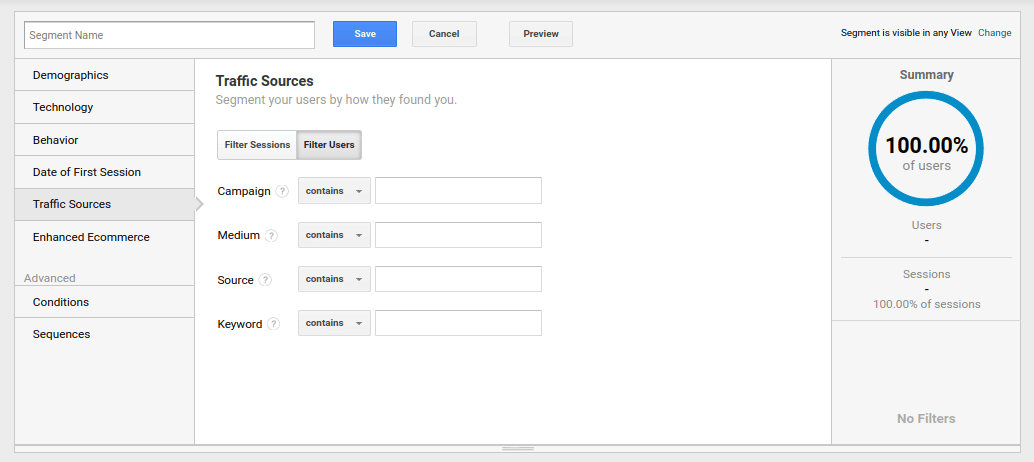Optimize Your ROI With Remarketing in Google Analytics
By utilizing the power of user information and tailoring advertisements to certain audience sectors, services can considerably amplify their conversion prices. The journey to making the most of ROI via remarketing is a nuanced path led with understandings and opportunities that can improve the trajectory of your advertising and marketing endeavors.
Recognizing Remarketing in Google Analytics
Understanding remarketing in Google Analytics is necessary for maximizing your digital marketing approach. Remarketing enables you to target users who have actually previously visited your web site or communicated with your app, presenting them with tailored advertisements as they surf other websites or use other apps within the Google Display Network. This approach helps keep your brand top of mind and urges users to return to your website, eventually increasing the probability of conversion.
By utilizing Google Analytics, you can track the performance of your remarketing projects, obtaining valuable insights right into customer actions, engagement, and conversions. This data enables you to fine-tune your bidding process, targeting, and messaging strategies to improve the general efficiency of your projects.
Moreover, recognizing the various sorts of remarketing checklists available in Google Analytics, such as common, vibrant, and comparable target markets, enables you to produce individualized and extremely segmented campaigns customized to details customer sectors. This degree of granularity can substantially improve the significance and effect of your remarketing efforts, ultimately maximizing your roi.
Establishing Up Remarketing Checklists
To efficiently apply remarketing projects in Google Analytics, the first action includes developing and setting up remarketing lists targeting details individual segments based upon their communications with your website or application. By establishing remarketing lists, you can tailor your advertising efforts to get to customers that have currently shown interest in your services or products.
To start, navigate to the Admin section of your Google Analytics account and select the Home where you wish to develop the remarketing listing. Under the Residential property column, click on 'Audience Definitions' and pick 'Audiences.' Next off, click the red 'New Target market' button and choose 'Develop New' to define the criteria for your remarketing list.

Crafting Reliable Remarketing Advertisements

When crafting your advertisements, concentrate on developing eye-catching headings and compelling visuals that stand out to prospective clients. Integrate solid calls-to-action that motivate individuals to review your website and finish a preferred action. Use dynamic remarketing to show customized ads featuring products or services that users have actually formerly checked out on your website.
Furthermore, make sure that your ads are mobile-friendly because a considerable part of internet website traffic originates from mobile tools. Examination different ad variants to recognize which messages and layouts drive the finest results. By continuously refining and optimizing your remarketing advertisements based upon efficiency data, you can maximize their performance and boost your roi.
Studying Remarketing Performance

Via Google Analytics, marketers can track the performance of their remarketing projects in real-time, allowing them to identify fads, patterns, and locations for enhancement immediately. By assessing the data, marketing experts can determine which advertisements are doing well, which target market sectors are reacting favorably, and which channels are driving the most conversions. This Homepage level of granularity enables marketers to make data-driven choices to maximize their remarketing campaigns for far better results.
Enhancing ROI With Remarketing
Evaluating remarketing information in Google Analytics allows marketers to pinpoint chances for enhancing roi (ROI) with critical read this post here adjustments - What Is “Remarketing” In Google Analytics?. To maximize ROI with remarketing, it is crucial to comprehend the habits of your audience. By examining customer interactions, such as the web pages they saw, the items they viewed, or the activities they tackled your website, you can tailor your remarketing projects better
Segmenting your audience based upon their behavior enables you to create individualized and targeted advertisements that are more likely to reverberate with them. By revealing relevant ads to certain sectors of your target market, you can enhance the chances of conversion and inevitably improve your ROI.
Additionally, evaluating different ad creatives, messaging, and deals can help determine what resonates ideal with your target market. A/B testing allows you to explore different elements of your ads to identify what drives the greatest involvement and conversion rates.
Final Thought
Finally, optimizing ROI with remarketing in Google Analytics requires a critical technique to evaluating user habits, segmenting audiences, producing tailored advertisements, and enhancing campaign performance. By leveraging data-driven insights and checking different methods, services can boost their remarketing efforts to drive higher interaction and conversion rates. This systematic technique ensures that sources are successfully alloted in the direction of taking full advantage of returns on financial investment in remarketing campaigns.
Next, click on the red 'New Audience' switch and choose 'Produce New' to define his response the parameters for your remarketing list.
By continually refining and optimizing your remarketing ads based on performance information, you can optimize their efficiency and improve your return on investment.
By diving right into these insights, marketing experts can obtain an extensive understanding of just how their remarketing initiatives are resonating with their target audience and driving conversions. To optimize ROI with remarketing, it is critical to recognize the behavior of your audience.In conclusion, making best use of ROI with remarketing in Google Analytics calls for a calculated method to assessing individual habits, segmenting target markets, creating customized ads, and maximizing project performance.